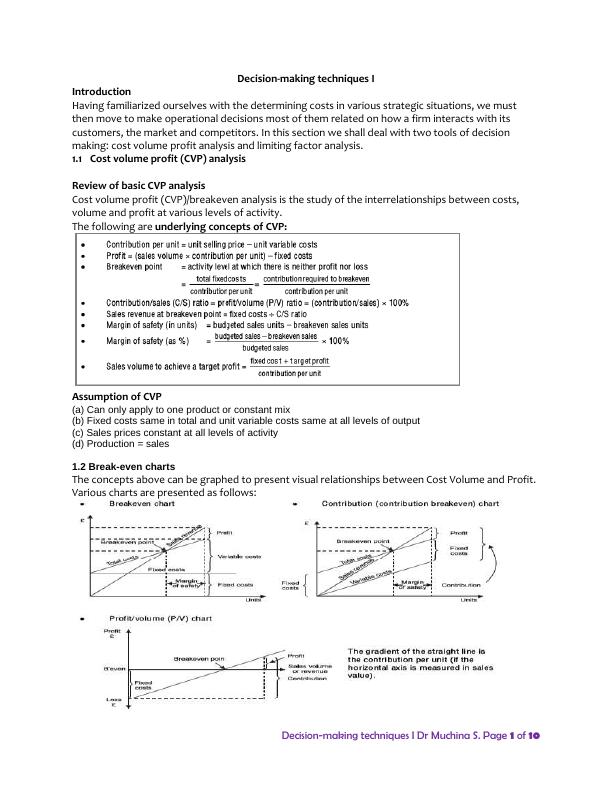Cost Volume Profit Analysis and Decision-Making Techniques
10 Pages5049 Words36 Views
Added on 2022-07-07
About This Document
This document focuses on Cost Volume Profit (CVP). Limitation and Advantages of CVP, limiting factor analysis, and contribution to sale ratio (C/S) are discussed. Organisations typically produce and sell a variety of products and services. To perform breakeven analysis in a multi-product organisation, however, a constant product sales mix must be assumed. The margin of safety for a multi-product organisation is equal to the budgeted sales in the standard mix less the breakeven sales in the standard mix. It may be expressed as a percentage of the budgeted sales.
Cost Volume Profit Analysis and Decision-Making Techniques
Added on 2022-07-07
ShareRelated Documents
End of preview
Want to access all the pages? Upload your documents or become a member.
MANAGEMENT ACCOUNTING FOR NON-ACCOUNTANTS
|6
|1056
|278
BREAK EVEN POINT ANALYSIS.
|5
|356
|58
Introduction to Quantitative Methods Assignment
|10
|1843
|25
Methods of Determining Breakeven Point
|9
|2031
|234
Managing Financial Resources
|16
|901
|81
1102AFE ACCOUNTING FOR DECISION MAKING - Homework
|3
|742
|40



